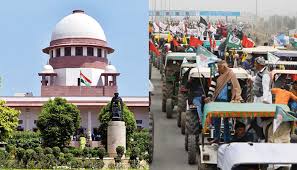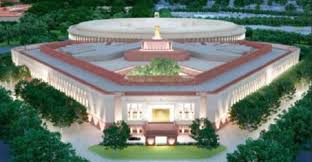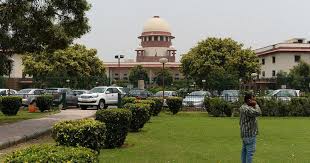Feature
SC quashes extension of OBC reservation to Jats

New Delhi: The Supreme Court on Tuesday quashed the March 4, 2014, notification by the then UPA government extending OBC reservation to Jats in nine states, ignoring the recommendation of the National Commission for Backward Classes to the contrary.
The decision was also endorsed by the Modi government, brushing aside the suggestion that it was rooted in electoral exigencies of the previous government.
An apex court bench of Justice Ranjan Gogoi and Justice Rohinton Fali Nariman said: “We cannot agree with the view taken by the union government that Jats in the nine states in question are a backward community so as to be entitled to inclusion in the Central List of Other Backward Classes.”
“Inclusion of politically organised class such as Jats… can’t be affirmed,” said Justice Gogoi, pronouncing the judgment.
“Neither can any longer backwardness be a matter of determination on the basis of mathematical formulae evolved by taking into account social, economic and educational indicators”, the court said, thrashing the cabinet decision to ignore the advice of the NCBC saying it was devoid of ground realities.
Determination of backwardness, the court said “must also cease to be relative; possible wrong inclusions cannot be the basis for further inclusions but the gates would be opened only to permit entry of the most distressed. Any other inclusion would be a serious abdication of the constitutional duty of the state”.
Holding that the notification issued on March 4, 2014 was not justified, the court said: “The view taken by the NCBC to the contrary is adequately supported by good and acceptable reasons which furnished a sound and reasonable basis for further consequential action on the part of the union government.”
“In the above situation, we cannot hold the notification dated 4.3.2014 to be justified,” the court said.
“Accordingly… the aforesaid notification… including the Jats in the Central List of Other Backward Classes for the States of Bihar, Gujarat, Haryana, Himachal Pradesh, Madhya Pradesh, NCT of Delhi, Bharatpur and Dholpur Districts of Rajasthan, Uttar Pradesh and Uttarakhand is set aside and quashed.”
The court decision quashing the notification came while deciding a batch of petitions challenging the March 4, 2014 notification.
Pointing out that the date on which the exercise of extending reservation is undertaken “has to be contemporaneous”, the court said that most of the data, except in the case of Haryana, was at least a decade old.
“Outdated statistics cannot provide accurate parameters for measuring backwardness for the purpose of inclusion in the list of Other Backward Classes. This is because one may legitimately presume progressive advancement of all citizens on every front i.e. social, economic and education,” the court said.
Any other view (not recognising the social, economic and education) would “amount to retrograde governance”.
The court hauled up the decision as negative governance and said: “Yet, surprisingly the facts that stare at us indicate a governmental affirmation of such negative governance in as much as decade old decisions not to treat the Jats as backward, arrived at on due consideration of the existing ground realities, have been re-opened, inspite of perceptible all round development of the nation.”
“This is the basic fallacy inherent in the impugned governmental decision that has been challenged in the present proceedings.”
Entertainment
Meghalaya Reserves Legalized Gambling and Sports Betting for Tourists

The State Scores Extra High on Gaming-Friendly Industry Index
Meghalaya scored 92.85 out of 100 possible points in a Gaming Industry Index and proved to be India’s most gaming-friendly state following its recent profound legislation changes over the field allowing land-based and online gaming, including games of chance, under a licensing regime.
The index by the UK India Business Council (UKIBC) uses a scale of 0 to 100 to measure the level of legalisation on gambling and betting achieved by a state based on the scores over a set of seven different games – lottery, horse racing, betting on sports, poker, rummy, casino and fantasy sports
Starting from February last year, Meghalaya became the third state in India’s northeast to legalise gambling and betting after Sikkim and Nagaland. After consultations with the UKIBC, the state proceeded with the adoption of the Meghalaya Regulation of Gaming Act, 2021 and the nullification of the Meghalaya Prevention of Gambling Act, 1970. Subsequently in December, the Meghalaya Regulation of Gaming Rules, 2021 were notified and came into force.
All for the Tourists
The move to legalise and license various forms of offline and online betting and gambling in Meghalaya is aimed at boosting tourism and creating jobs, and altogether raising taxation revenues for the northeastern state. At the same time, the opportunities to bet and gamble legally will be reserved only for tourists and visitors.
“We came out with a Gaming Act and subsequently framed the Regulation of Gaming Rules, 2021. The government will accordingly issue licenses to operate games of skill and chance, both online and offline,” said James P. K. Sangma, Meghalaya State Law and Taxation Minister speaking in the capital city of Shillong. “But the legalized gambling and gaming will only be for tourists and not residents of Meghalaya,” he continued.
To be allowed to play, tourists and people visiting the state for work or business purposes will have to prove their non-resident status by presenting appropriate documents, in a process similar to a bank KYC (Know Your Customer) procedure.
Meghalaya Reaches Out to a Vast Market
With 140 millions of people in India estimated to bet regularly on sports, and a total of 370 million desi bettors around prominent sporting events, as per data from one of the latest reports by Esse N Videri, Meghalaya is set to reach out and take a piece of a vast market.
Estimates on the financial value of India’s sports betting market, combined across all types of offline channels and online sports and cricket predictions and betting platforms, speak about amounts between $130 and $150 billion (roughly between ₹9.7 and ₹11.5 lakh crore).
Andhra Pradesh, Telangana and Delhi are shown to deliver the highest number of bettors and Meghalaya can count on substantial tourists flow from their betting circles. The sports betting communities of Karnataka, Maharashtra, Uttar Pradesh and Haryana are also not to be underestimated.
Among the sports, cricket is most popular, registering 68 percent of the total bet count analyzed by Esse N Videri. Football takes second position with 11 percent of the bets, followed by betting on FIFA at 7 percent and on eCricket at 5 percent. The last position in the Top 5 of popular sports for betting in India is taken by tennis with 3 percent of the bet count.
Local Citizens will Still have Their Teer Betting
Meghalaya residents will still be permitted to participate in teer betting over arrow-shooting results. Teer is a traditional method of gambling, somewhat similar to a lottery draw, and held under the rules of the Meghalaya Regulation of the Game of Arrow Shooting and the Sale of Teer Tickets Act, 2018.
Teer includes bettors wagering on the number of arrows that reach the target which is placed about 50 meters away from a team of 20 archers positioned in a semicircle.
The archers shoot volleys of arrows at the target for ten minutes, and players place their bets choosing a number between 0 and 99 trying to guess the last two digits of the number of arrows that successfully pierce the target.
If, for example, the number of hits is 256, anyone who has bet on 56 wins an amount eight times bigger than their wager.





















